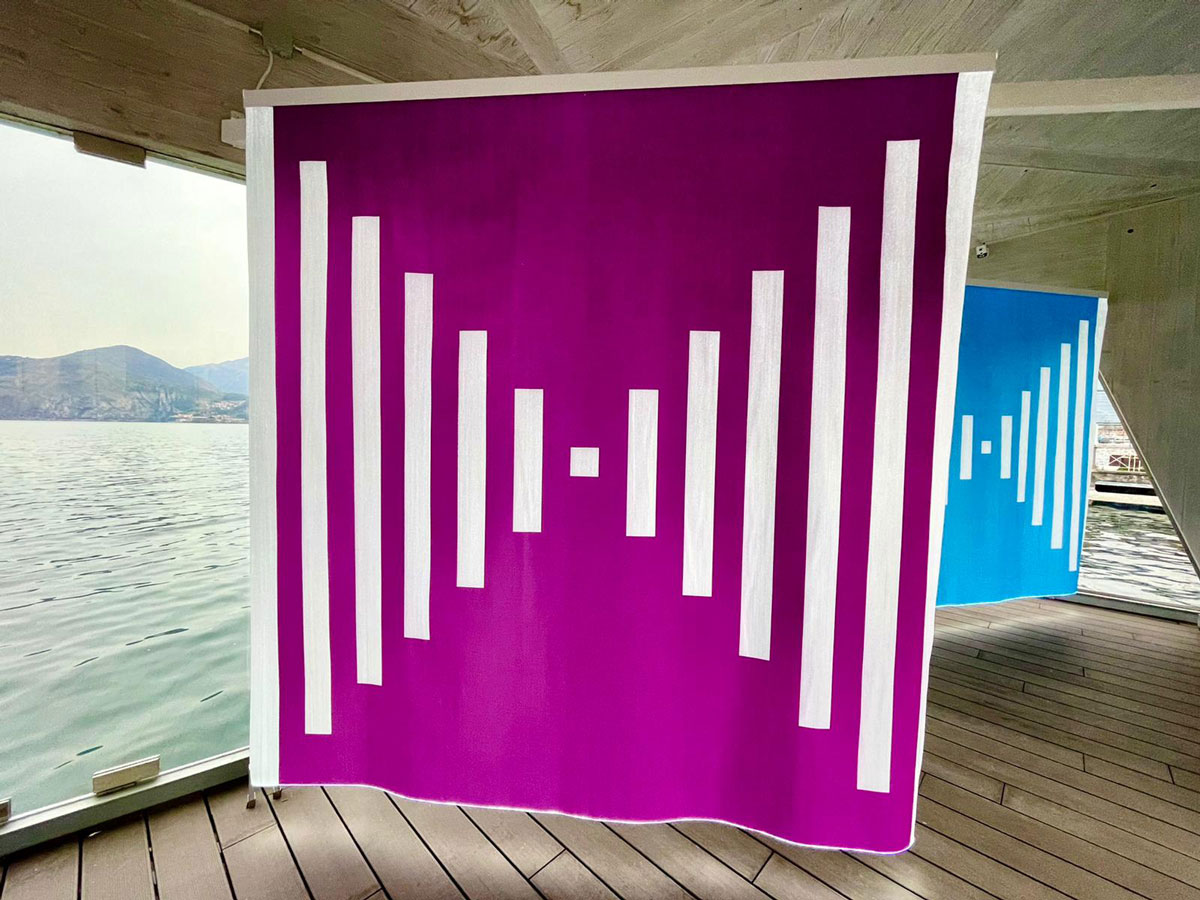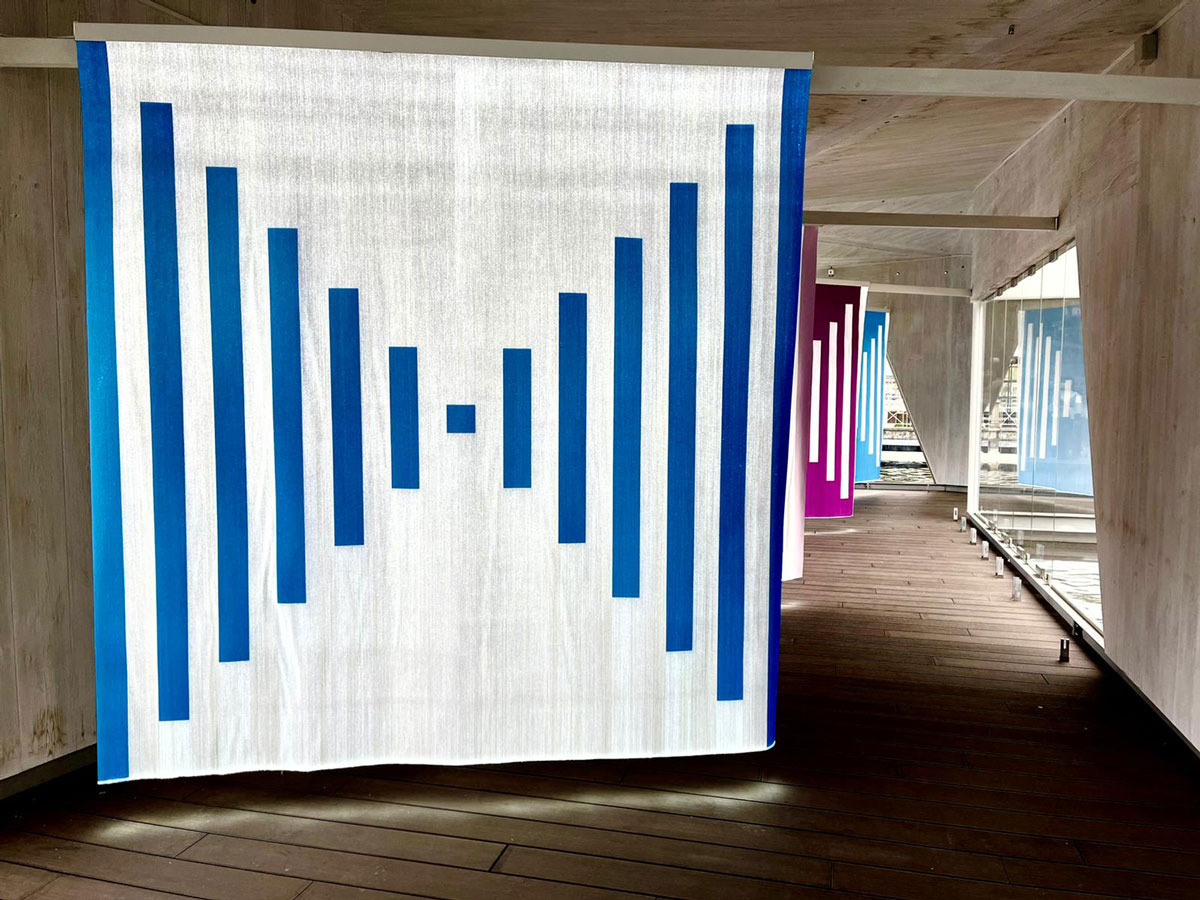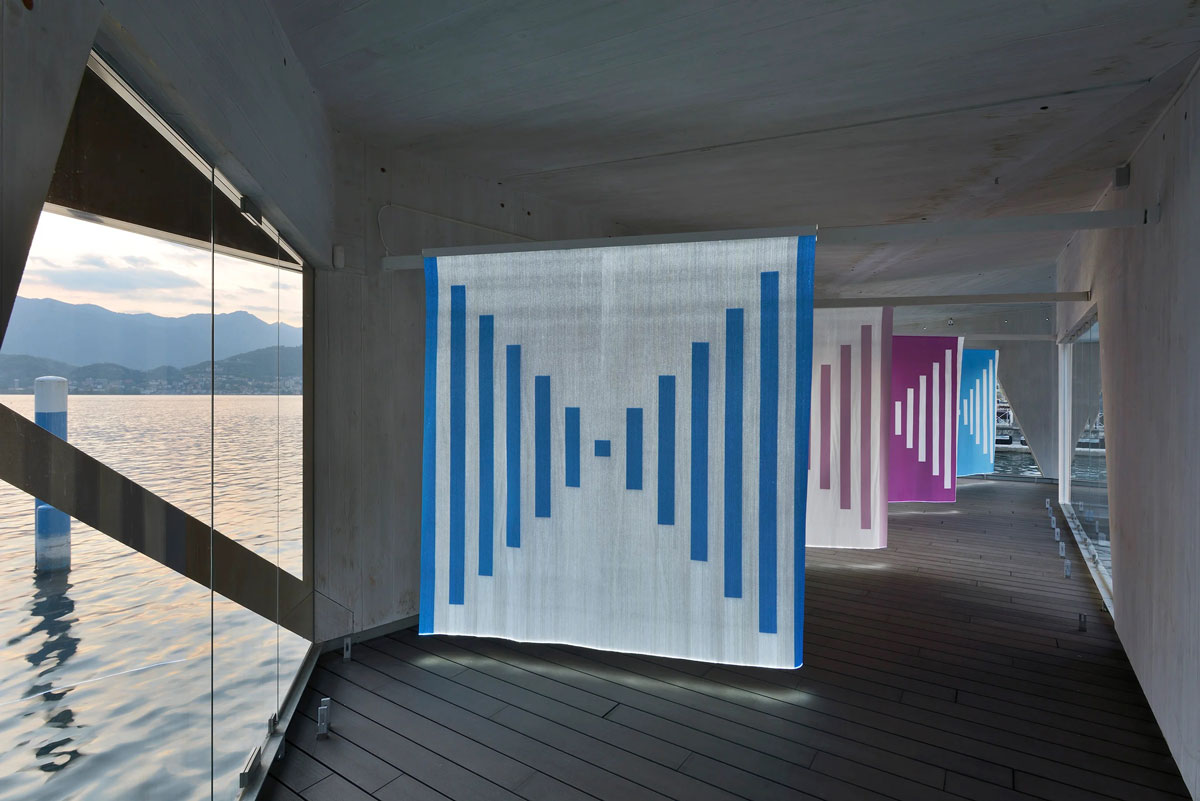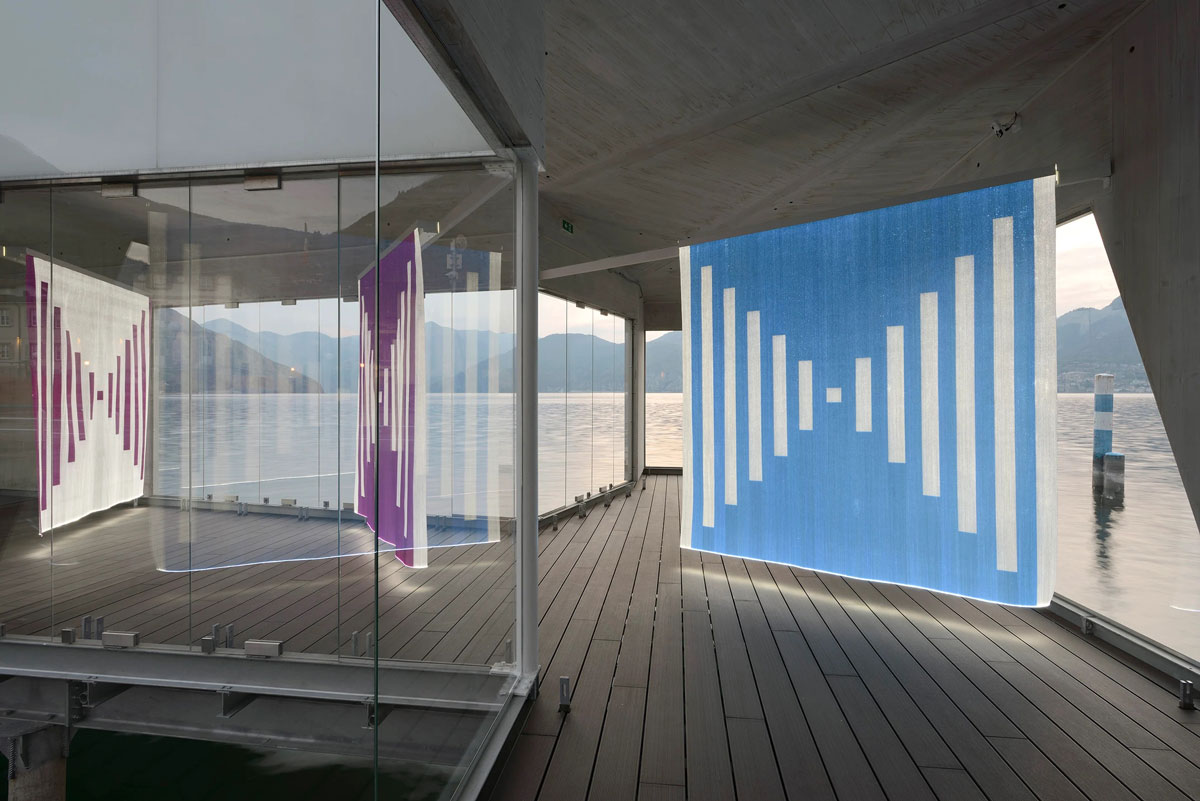ART-PRESENTATION: Daniel Buren-Mirad’Or
 Daniel Buren is best known for his distinctive site-specific installations of alternating stripe patterns. His concept of a “degree zero of painting” which he developed in the early 1960s, is the artist’s hallmark approach to the conditions of making a work of art. Throughout his work, he often employs simplified patterns as an approach to color and graphics in relation to architecture and space.
Daniel Buren is best known for his distinctive site-specific installations of alternating stripe patterns. His concept of a “degree zero of painting” which he developed in the early 1960s, is the artist’s hallmark approach to the conditions of making a work of art. Throughout his work, he often employs simplified patterns as an approach to color and graphics in relation to architecture and space.
By Efi Michalarou
Photo: Galleria Massimo Minini Archive
“Mirad’Or” is a contemporary showcase on the waters of Lake Iseo, opening with the exceptional presence of Daniel Burenand his artworks “Fibres optiques”. The showcase confirms the Lake Iseo and the area related to the city of Brescia as a core distric for contemporary art, after the success of Christo’s “The Floating Piers” and others artistic projects by Mimmo Paladino, Anish Kapoor, Emilio Isgrò and Francesco Vezzoli. “Mirad’Or: is the new pavilion overlooking the shore of Lake Iseo dedicated to culture, represents a pleasant pause on a human scale. Promoted by the Municipality of Pisogne and designed by Mauro Piantelli of De8_Architetti , the suggestive construction stands in the place where the medieval port and the ancient wash house were built. And playing with the perceptual revelations of this suspended place will be an artist who, starting from the delicate and unstable visual balance, has developed his long research: Daniel Buren , invited to open the Mirad’Or cycle by Massimo Minini , one of the most influential Italian gallery owners and promoter of the inaugural programming. Buren brings to “Mirad’Or” four of his works which, divided into diptychs, installed within the space. The four large luminous works will be visible day and night, usable only from the outside and, for a better perception, preferably from a distance, even at great distances, such as from the opposite shore of the lake. Or bring into dialogue the historic 8.7 cm vertical striped motif, the artist’s stylistic signature since the 1960s, with the new potential of technology and optical fiber, which allow the work itself to become a source of light for the surrounding space.
Daniel Buren was born in Boulogne-Billancourt near Paris, on 25/3/1938. After completing his secondary education he enrolled in the École des Métiers d’Art in Paris. From December 1966 to September 1967, Buren forms an association with painters Olivier Mosset, Michel Parmentier and Niele Toroni for a series of collective manifestations that were to upset the artistic practices of the time and denounce the obsolescence of exhibition spaces in France. In the mid 60’s, Buren began to create paintings that radically questioned and explored the economy of the media used in his work and the relationship between background (support medium) and form (painting). In 1965, when he was painting pictures that combined rounded forms and stripes varying in sizes and colors, he chose to use an industrial fabric with fixed vertical 8.7 cm-wide stripes alternating white with another color. Beginning from this extremely simple and banal visual register, Buren further impoverished it by repeating it systematically to reach the grade of zero painting. This reflection will cause the observer’s attention to shift from the work to the physical and social environment within which the artist intervenes Eventually, he abandoned his studio in 1967, to favour work in situ, starting from the street with the affichages sauvages, then the gallery, the museum, the landscape or the architecture. His “visual tool” is based on the use of alternating stripes, which let him reveal the significant details of the site where he is working, by employing them in specific, and at times complex, structures lying somewhere between painting, sculpture and architecture. His in-situ works play with points of view, spaces, colors, light, movement, the surrounding environment, angles or projections, acquiring their decorative force by radically transforming the sites. Incisive, critical and engaged, Buren’s work is in a continual state of development and diversification, and never fails to stimulate comment, admiration and disagreement. In 1986, he realized his most controversial public commission, today classified as a “historical monument” Les Deux Plateaux , for the courtyard of honour of the Palais-Royal in Paris. In the same year, he represented France at the Venice Biennale, where he was awarded the Golden Lion for Best Pavilion. In 2007, he received the Praemium Imperiale for Painting in Tokyo, Japan.
Photo: Installation view: Daniel Buren, Mirad’Or-Pisogne, 2021, Courtesy Galleria Massimo Minini
Info: Curator: Massimo Minini, Lungolago Pisogne, Pisogne, Brescia, Duration: 24/4-30/9/2021, Days & Hours: Daily 00:00-24:00





